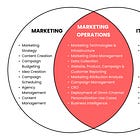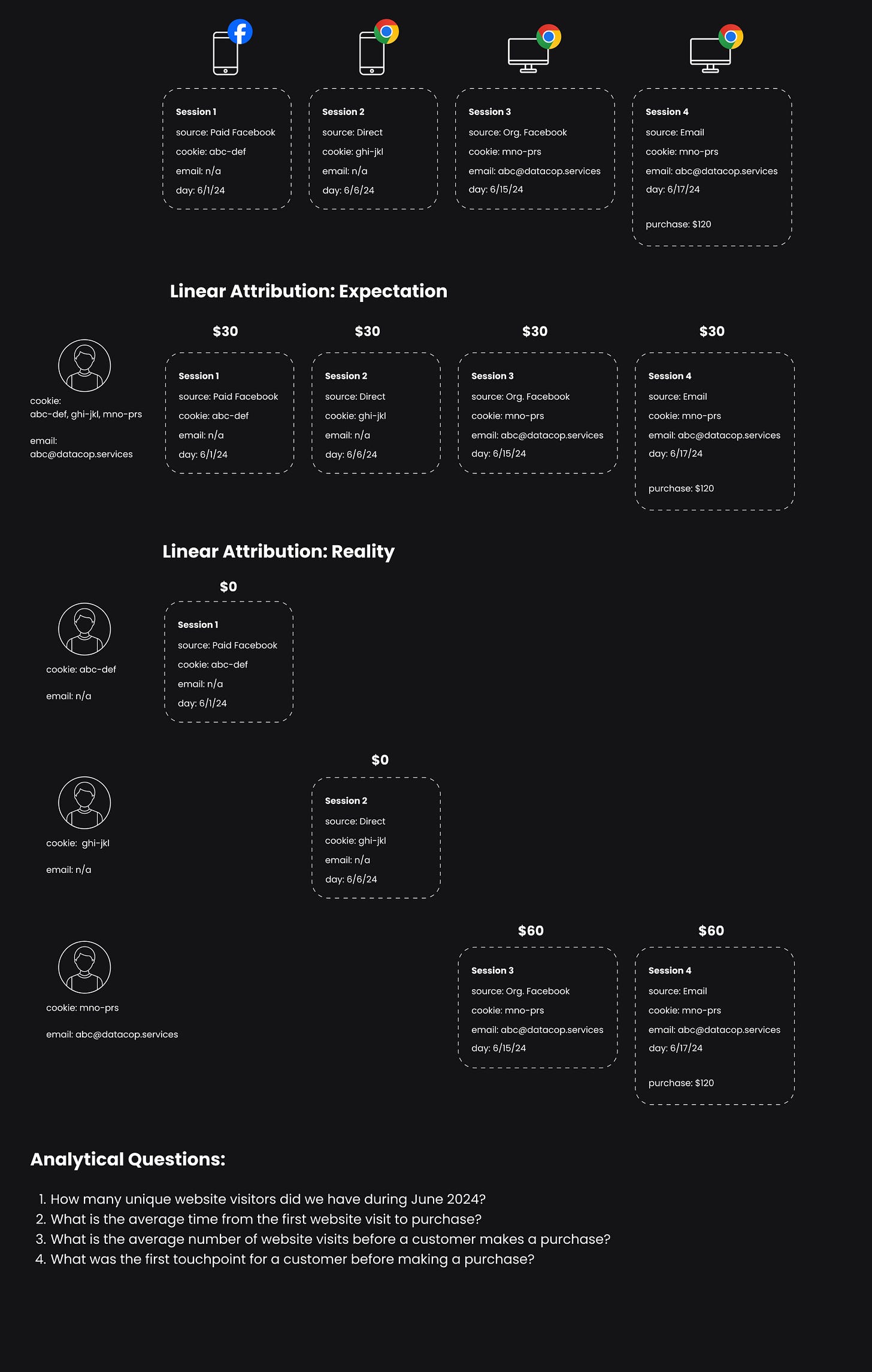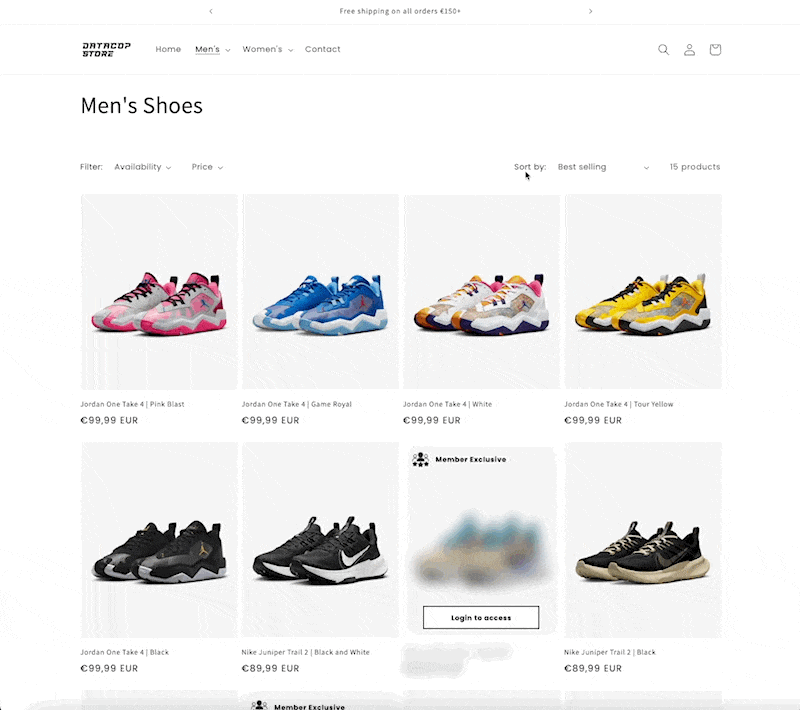First-Party Data Collection & Data Quality (Part 1: Digital Identity)
When it comes to Digital Identity, it is one of the least understood areas in marketing circles. However, the difference between good and bad digital identity profoundly impacts website.....
About the Author:
Co-founder of Datacop, agency that fulfils marketing operation roles in large eCommerce companies such as OluKai, Melin, Roark, Visual Comfort and Company, Dedoles and others.
In a recent article, I provided an overview of the role of the Marketing Operations Department in eCommerce companies with annual revenues between $25 million and $2 billion.
In that article, we introduce the seven key areas of expertise within the Marketing Operations Department, which we visualize as a pyramid with three levels:
Data Collection & Quality
Data Analytics
Use Cases
All revenue-generating use-cases at the top should be built on solid foundations. The effectiveness of these use-cases is greatly influenced by the amount and quality of data required. Additionally, we need to evaluate whether a use-case is achieving the desired outcome. Analytical tools might also limit the evaluation of revenue-generating use-cases if they lack key functionality, making it challenging to understand the impact of these use-cases with high confidence.
In the next few articles, we will explore each area covered by the Marketing Operations Department, providing a comprehensive overview of the key challenges and aspects of each.
Today, we'll start with “First-Party Data Collection & Data Quality.” So without further ado, let's dive right in.
First-Party Data Collection & Data Quality
Let’s start with a quick definition. What is first-party data?
First-party data is information collected from your customer base, subscribers, and site visitors when they interact with your site or marketing, or when they make a purchase.
First-party data means that you own the data being collected and do not share it with third parties, such as Facebook, preventing them from utilizing it. If you share the data or do not own the data being collected, it is classified as third-party data.
Here is a short video that explains first-party data in more detail:
How does a browser determine if the data collection process deployed on your website is first-party or third-party? Browsers check the domain to which the data collection points. If the tracking domain does not match your domain, it is considered third-party.
For example, if a tracking snippet on www.asos.com points to www.facebook.com, then this tracking snippet is considered third-party. However, if the tracking snippet points to a subdomain of the main domain, such as www.tracking.asos.com, then it is considered first-party.
This classification is especially important for addressing the digital identity problem, which we will discuss in more depth later in this article.
Biggest First-Party Data Tracking Challenges
Based on our experience we would say that there are 3 big areas that should be addressed when it comes to First-Party Data Tracking. Those are:
Digital Identity,
Data Quality & Best Practices,
Data Monitoring.
Digital Identity
When it comes to Digital Identity, it is one of the least understood areas in marketing circles. However, the difference between good and bad digital identity profoundly impacts website personalization and the performance of automated triggers, such as cart or browse abandonment.
I understand that the concept of digital identity can be quite abstract, which is why I believe it is best explained through demonstration. Watch the following video, where we explain how different tracking software creates and maintains digital identity:
For reference, here is the visualization we used in the video to explain the negative impact of poor digital identity on digital analytics. I strongly recommend watching the video above to ensure the rest of the article makes sense to you.
What Can Be Done to Improve Digital Identity?
There are several use cases that can help improve the accuracy of the digital identity of your website visitors, each with varying degrees of success. Here they are:
1. Reclassification from Third-Party Tracking to First-Party Tracking
If your tracking software is classified as third-party tracking, it negatively impacts the accuracy of the digital identity of your website visitors. For example, Safari expires all third-party cookies after 7 days.
For instance, if you visit a website that relies on third-party data tracking through Safari, subscribe to their newsletter, and return to the website 8 days later, you would be seen as a first-time visitor because your cookie expired after 7 days. Consequently, your website experience will not be personalized, and you will not receive any automated email scenarios if eligible.
When reclassified to first-party data tracking, you can set up your own expiration date for cookies (e.g., 2 years). Your digital identity will be much more resilient, resulting in stronger website personalization use cases and more automated email or SMS scenarios being sent.
In the context of Bloomreach Engagement, you can transition from third-party to first-party tracking by implementing a custom tracking domain (CTD). Here is the documentation on how you can do so.
We implemented Bloomreach CTD multiple times and consistently saw positive results. For example, after implementing CTD, we observed a 15% increase in website visitors identified as email subscribers. These visitors would not have received cart or browse abandonment emails prior to the CTD implementation, but they do now if they abandon an item in their cart or during their browsing experience
2. Metarouter.io
Ad blockers and other tracking prevention software are becoming increasingly problematic in the realm of digital identity. These tools can block any browsing behavior from being tracked, resulting in the inability to send cart or browse abandonment emails and personalize website experiences for affected users. Additionally, this leads to gaps in data analytics.
Reclassifying to first-party cookies helps bypass some ad blockers or tracking prevention software, but not all. For example, a popular tracking prevention software called Ghostery will block Bloomreach Engagement tracking even if CTD is implemented.
Metarouter.io offers the most robust tracking solution we currently know of, providing a range of other advantages as well. In the context of digital identity, it is important to note that Metarouter can track the website behaviour of all users, including those using advanced tracking prevention software like Ghostery.
3. Gated or Semi-Gated Experiences
Do you know which platforms have minimal issues with digital identity? Tools like Netflix, Facebook, or any SaaS platform that requires an email login. They effortlessly track all of your visits under the same profile because you are always required to log in (or your login information is saved in the browser) each time you visit their platform.
In eCommerce, it is technically possible to require a login before a visitor can browse a product section (a so-called “gated” experience). We have seen this approach implemented once by a Polish furniture retailer called Westwing, though they have since abandoned it for reasons unknown to us.
Requiring a login for each visitor can significantly impact conversion rates. However, it also allows you to capture a large number of email addresses for marketing purposes, leading to near-perfect digital identity tracking.
We believe it is possible to integrate aspects of gated experiences into eCommerce without negatively impacting conversion rates by implementing what we call a semi-gated experience.
Imagine that only certain aspects of your website, such as daily discounts:
or specific product offering, are available to logged-in users:
This approach provides customers with a strong incentive to log in each time they visit the website, even from different devices. The result is higher quality digital identity tracking and an increase in collected email addresses for marketing purposes.
4. Retention.com
What if you could know a website visitor's email address even if they haven't provided it on your website? If you are based in the US, this can be achieved using a tool called Retention.com (note: this tool is not legal under GDPR and therefore cannot be used on European websites).
Retention.com offers two products:
Reclaim: This product helps you identify users who are already subscribed to your newsletter. By "reclaiming" these users, you can recover otherwise lost revenue by sending cart or browse abandonment emails, even when digital identity accuracy issues arise. Additionally, you can personalize the website experience for these users based on their previous interactions.
From our perspective, this is a highly valuable proposition with minimal downside.
Grow: This product provides you with the email addresses of website visitors who are not currently subscribed to your newsletter. This allows you to send newsletters to them even though they haven't explicitly subscribed.
We've seen brands that are comfortable with this approach and others that find it too aggressive. However, it is also true that utilizing "Grow" is by far the fastest way to expand your newsletter list compared to all other options we currently know.
5. QA of “Identify” Calls on Website
Ensure that you are correctly capturing identifiers, such as customers' email addresses, at all touchpoints where they can provide one.
It has happened to us multiple times that the integration of tracking software on the website had gaps, failing to capture customers' email addresses even when they provided one on one or multiple of these places:
Checkout
Email pop-up banners
Profile creation
Log-in
Website footer
This can unnecessarily result in customer behavior being split into multiple profiles simply because we failed to capture the email address due to gaps in our data tracking.
For example, let’s say you do not capture the customer’s email address at checkout before they make a purchase. How would the customer’s data be saved in a CDP in this case? Here is a diagram that explains this scenario:
In the next article, we will address two other major challenges related to first-party data: Data Quality & Best Practices and Data Monitoring Systems.
If you found this post valuable…
We hope you found this article valuable. If so, please consider subscribing (for free!) to receive updates on our latest publications.
Additionally, if you think someone else might benefit from this information, we would greatly appreciate it if you could share this article using the button below.








